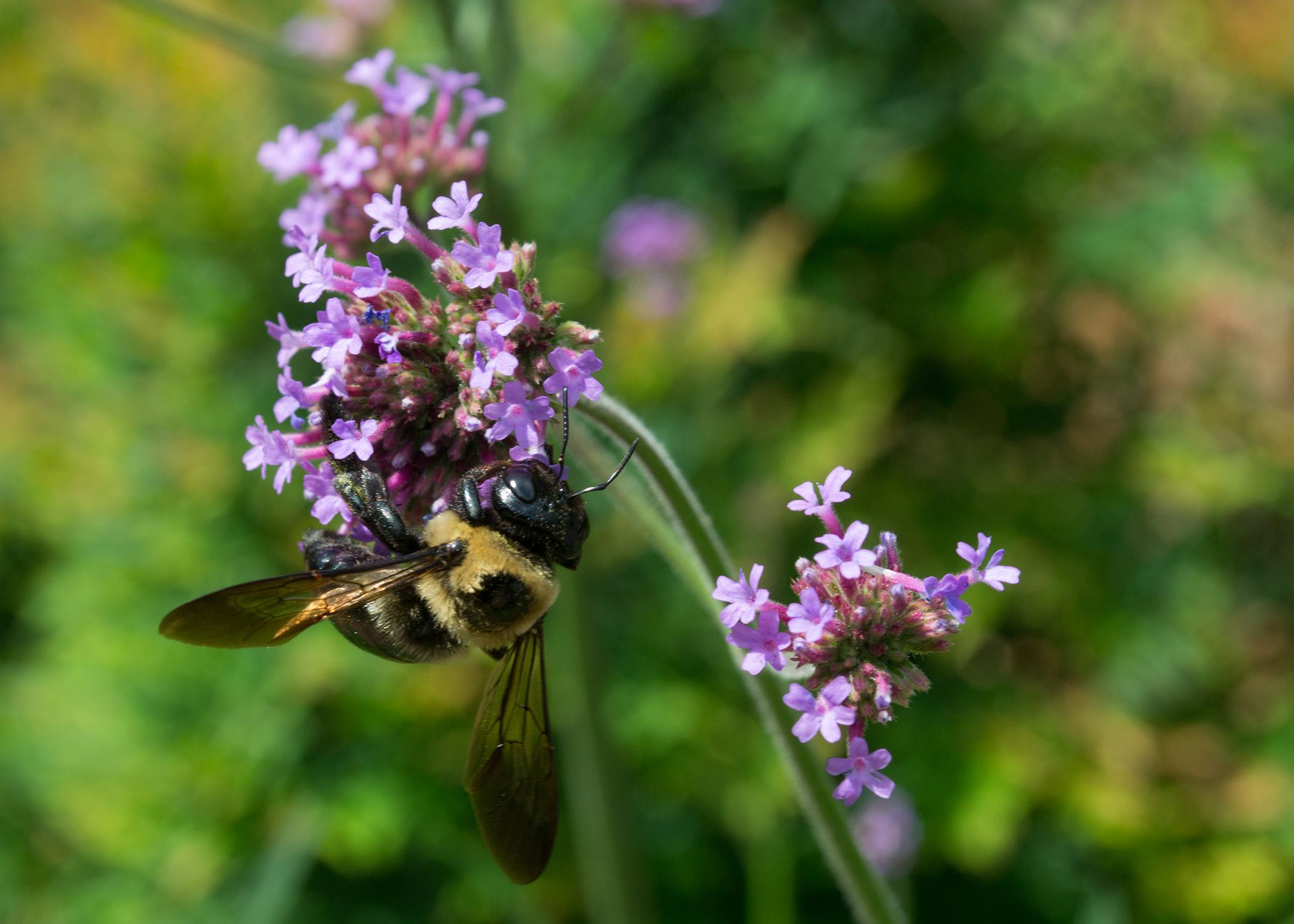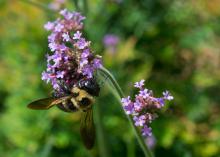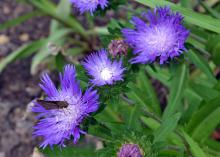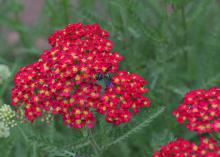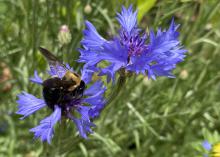Add pollinator-friendly plants to your landscape
I recently visited the home of Marian Hill in Tupelo and toured her beautiful pollinator gardens full of plants buzzing with activity. There were several varieties of yarrow, some bachelor’s buttons and Stokes’ aster planted throughout.
According to the U.S. Department of Agriculture, 75% of the world’s flowering plants and about 35% of the world’s food crops depend on pollinators to reproduce. That means one of every three bites of food you eat relies on pollinators for production.
Bees may be the most well-known pollinators, and there are more than 3,500 species of native bees.
One of my favorite native perennial pollinator plants is Stokes’ aster, a low-growing plant with dark green, lance-shaped leaf clusters. It has numerous solitary flower heads that are 2 to 4 inches across with deeply divided purple rays and very prominent purple florets emerging from the disc.
Stokes’ aster is easy to care for once established. It performs best in partially sunny locations with well-drained, acidic soil. It can grow from 10 to 24 inches tall.
While this plant requires very little maintenance, you may need to divide mature clumps. You can also deadhead spent flowerheads by pinching them off to encourage more flowering.
Yarrow is a native perennial plant with many small flowers that combine into flat-topped flower structures that are very inviting to butterflies, bees, moths and other pollinators. The native variety produces white, frilly, showy flowers that grow on multi-branching stems.
Other varieties produce pink, yellow, red or orange flowers. The leaves are divided into smaller leaflets, giving them a delicate, fernlike, lacy appearance.
In natural conditions, yarrow is found in the mildly disturbed soils of open grasslands or in open forests. Yarrow tends to be leggy in part-shade conditions, so plant yours in full sun if you desire a more compact form. Plant longevity and flowering increase in nutrient-poor, dry soil with full sun.
A classic annual reseeding pollinator plant is the bachelor’s button, often called cornflower. It reseeds with blooms that may be single or double.
They reseed freely, so once planted, you will be growing bachelor’s buttons year after year. They need minimal care and grow well in full-sun locations.
Another great perennial pollinator plant is Purpletop verbena, or tall verbena. This is an upright, clump-forming plant with wiry, widely branched stems. The flowers are little tubes in purple or rosy lavender that form in rounded clusters 2 to 3 inches across. These blooms are highly attractive to butterflies, bees and other insects.
Purpletop verbena is not particular about soil type, but it is short-lived in areas with winter-wet soil. It grows best in full sun or very light shade. Pinch the plants in early spring as the shoots begin to elongate to increase the plant’s fullness and keep the height at a more manageable level.
Whether you live in a city apartment, a suburban neighborhood or on a farm, you can create a pollinator habitat. Try any of these beautiful plants in your pollinator garden, and I’m sure you will be pleased with the results.

